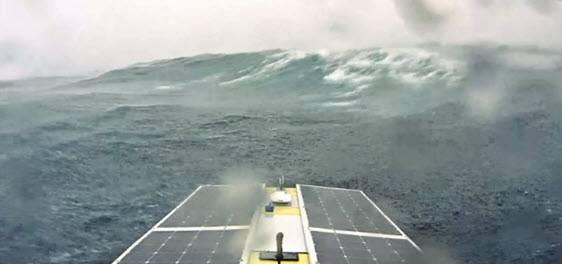SeaTrac has used its SP-48 uncrewed surface vehicle (USV) to map potential hypoxic zones in the U.S. Gulf of Mexico as part of a project that confirmed its performance using data from a crewed vessel.
Working in partnership with the University of Southern Mississippi (USM) and NOAA’s Office of Marine and Aviation Operations (OMAO), SeaTrac sought to prove the effectiveness of an uncrewed system in gathering real-time data in these waters, while also reducing the manpower and resources used in traditional data collection methods.
Operational goals included testing and demonstrating sampling procedures for remote, 24/7, over-the-horizon operation of the USV and winch.
During the project which ran for 14 days in December 2023, personnel based in SeaTrac’s Marblehead, Mass., operation center remotely piloted the SP-48.
Throughout its time at sea, the USV relayed collected data from the sonde and other sensors over available cellular and satellite connections to servers at USM for real-time quality assurance.
Simultaneously, USM and NOAA collected data via a crewed vessel along several sampling sites to compare and validate data collected by the SP-48.
The SeaTrac SP-48 USV was configured with a deep keel and redundant satellite communications for offshore operations. It was fitted with an AML-3 Sonde (with wireless charging capabilities) as well as conductivity, temperature, depth (CTD) and dissolved oxygen (DO) sensors. Auxiliary sensors for additional data collection included the Teledyne Workhorse Monitor 300 kHZ ADCP, SeaView Systems SVS-603HR wave sensor, AIRMAR 200WX Met Station and AIRMAR DT800 depth and temperature sensor.
Operating in the U.S. Gulf of Mexico in December delivered high winds, rough seas and limited sun for battery charging due to cloud cover and seasonally shorter days. The operations team managed the power budget by running at efficient speeds (
Effectively and accurately mapping hypoxia requires collecting data within one meter of the seafloor. SeaTrac developed and deployed a bottom-detection capability for its winch to enable measurements to the seafloor for full-depth sampling, in this case 222 feet. Real-time QA/QC found the tuning of the system to initially be too sensitive, which caused several premature recoveries. The team adjusted parameters during the mission to account for the sea state and reliably sample along the bottom.
The team required extended duration sampling for profiling applications. AML developed and SeaTrac integrated and demonstrated wireless charging capabilities for the AML-3 sonde onboard to enable long-duration deployments.
SeaTrac also configured the SP-48 with multiple, redundant cellular and satellite communications to ensure robust and reliable communications protocols. Data was transmitted in real time over available communications links and backed up locally on the USV.
Despite deployment in adverse conditions, SeaTrac’s SP-48 successfully collected quality data at 31 stations over 220 NMs, demonstrating the USV’s reliability, endurance and capabilities in scientific missions at sea.
The platform operated continuously, holding position at sea with no manual intervention and minimal need for remote pilot monitoring while at sea or in transit. The SP-48 employed station-keeping for three separate 24-hour periods, demonstrating a significant capability for mission flexibility.
Power, control and drive systems operated without error, and the sensors collected data very comparable to that collected in crewed missions.
“The ease of monitoring the vehicle and payloads in real time allowed for optimizing performance on the fly. Being able to remotely control and adjust collection parameters and mission plans without needing to subject ourselves to the rough conditions allowed for quality data collection in conditions well beyond the safety cutoff for our crewed vessel operations,” said James Thompson, Cat-A Hydrographer, UxS Operator, USM.
“SeaTrac’s SP-48 and transom winch were successful in significantly reducing the on-site personnel needed for coastal hypoxia mapping despite unfavorable sea states and congested coastal corridors. Even more impressive was the boat’s responsiveness: At no point was the vehicle unresponsive, and all data was received into our CUBEnet portal in a timely manner,” said Dr. Jason McKenna; Director of Research, Development, Testing, Evaluation & Training, USM.

